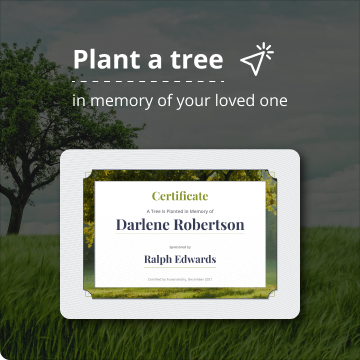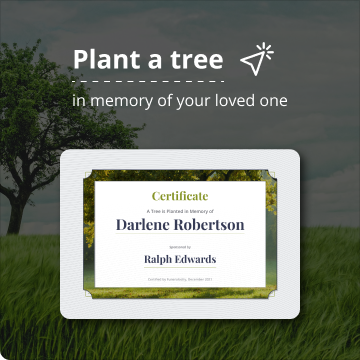
Planning a funeral can be stressful. Many important decisions need to be made within a relatively short time frame when families are grieving. A funeral planning checklist is a useful tool that will help keep track of all the items, duties, and responsibilities involved in making funeral arrangements.
Whether you’re planning a funeral for a loved one or pre-planning your funeral, use these checklist ideas to stay organized throughout the process.
Funeral Planning Checklist: When a Loved One Dies
Before you start making funeral arrangements for a loved one, consider asking family and friends for help and support. Request their input and recommendations, and delegate specific funeral tasks to lift some of burden off your shoulders.
Keep in mind most of our funeral checklist items are optional, and ultimately depend on the preferences and traditions of the deceased and immediate family.
Step 1: Gather Information
- Look for funeral plan documents or inquire if a will included instructions regarding funeral arrangements.
- Discover whether the deceased had a pre-paid funeral plan (e.g. “preneed policy,” funeral insurance) with a funeral home.
- Inquire about any military or veteran benefits for the deceased.
- Collect biographical and personal information about the deceased for funeral documents (e.g. death certificate, obituary).
- Collect photos and images of the deceased to use during the service or to place in the funeral announcement.
Step 2: Decide on the Type of Funeral Service
- Will the deceased be buried or cremated?
- What type of funeral service will be planned? You can learn in depth about different types of funeral services; some of the main options are:
- Traditional funeral with burial
- Cremation service
- Celebration of life
- Military burial
- Green burial
- Where will the funeral be held? Use Funeralocity’s free funeral home search to compare funeral homes and cremation providers in your area
- If you’ve decided on a funeral home for the service, schedule a meeting with the funeral director to discuss arrangements
- Write an obituary and publish it online or in a newspaper
Step 3: Work Out Logistics of Your Cremation or Funeral Service
- Schedule a location, date, and time for the selected services
- Decide whether there will be a viewing or visitation. If so:
- Choose a location, date, and time for the viewing
- Decide if there will be open or closed casket at the viewing service
- Select clothing and jewelry for burying the deceased.
- Choose a recent photo of the deceased for the stylist to use when preparing the body for viewing

Step 4: Consider Optional Traditions for Your Funeral Service
- Choose someone to lead the funeral service (e.g., minister, celebrant)
- Make a list of – and contact – people who should be invited to the funeral service
- Write the funeral order of service and the eulogy – or choose someone to do so
- Choose ushers and pallbearers for the funeral service – friends or family can provide this service
- Select readings for the funeral service (spiritual passages, prayers, poems, etc.) and assign readers
- Select someone to deliver the eulogy
- Choose people to give special tributes or remarks
- Decide which religious, cultural, personal, or family traditions will feature in the service
- If desired, choose musical selections, and book musicians and/or singers
- Source flowers, funeral wreaths, and other decorative items for the funeral venue – check out funeral flower options and more that can easily be purchased through Funeralocity
- In lieu of flowers, decide where donations can be made in memory of the deceased
- Select photos and videos for a visual tribute
- Print funeral programs, memorial cards, and other funeral materials
- Choose a guest book for funeral attendees to sign into and pay their respects
- Arrange transportation for family members to the funeral venue
- Provide lodging and transportation information for those traveling to attend the funeral service
Considerations: Cremation vs Burial Checklist
Checklist for a cremation service:
- Choose the type of cremation service to begin planning
- Choose a venue and date for the service – compare cremation providers with Funeralocity
- Decide on whether you’ll have a cremation witness ceremony, and who will attend
- Choose an urn to store the cremated remains
- Appoint who’s responsible for collecting the cremated remains from your cremation provider
- Decide on the final disposition method for the cremated remains (e.g. burial, scattering ashes)
Checklist for a Burial Service:
- Choose the type of burial service – the funeral home you choose can walk you through your options
- Choose a cemetery and burial plot
- If you’re burying at a home or private estate, obtain the necessary permits and licenses as required
- Decide whether or not you’re having a graveside ceremony
- Schedule a date and time for the burial service/graveside ceremony
- Decide on the type of casket or alternative container used for burial
- Decide whether or not you’ll have a reception or memorial service after the burial processions
- Select a grave marker or headstone and prepare the inscription/epitaph
Pre-Planning a Funeral Checklist: Making Arrangements for Yourself

Making funeral plans in advance can bring you and loved ones peace of mind. A customized funeral plan details your final wishes, and allows family to carry out the necessary arrangements without ambiguity or stress while they’re mourning your loss.
When pre-arranging a funeral, make sure to include information regarding payment. If you’re able to pre-pay the funeral costs or purchase funeral insurance, record this information and share it with a trusted family member or friend. This will prevent your family from making payments on funeral services that were purchased in advance.
Here’s a funeral checklist for pre-planning a funeral or a cremation. Feel free to add or remove items based on your personal preferences.
Step 1: Burial or Cremation?
- Do you want to be buried or cremated?
Step 2: Decide on the Type of Service
- What type of funeral service do you want (burial, cremation service, green burial, etc.)?
- Where do you want the service to be held? Common venues are churches, funeral homes, private homes, and outdoor venues.
- Select a first and alternate choice for service location. Document contact information for the venue(s) of your choice.
- If you choose a funeral home, call the funeral director and schedule a meeting to discuss the arrangement in advance.
- If you choose cremation, call the funeral home or crematory and inquire about cremation options. Compare funeral homes and cremation providers in your area on Funeralocity.com
Pre-Plan the Funeral Service:
- Who should manage the funeral arrangements per your instructions?
- Document their contact information.
- Who should be involved in the funeral service?
- Officiant
- Pallbearers
- Obituary writer(s)
- Eulogy reader(s)
- Special guests (individuals, groups, organizations)
- Other
- Will there be a viewing or visitation service? Choose clothing and jewelry as necessary.
- What elements should be included in the funeral service?
- Religious customs
- Veteran/Military honors
- Special readings or remarks
- Flowers and decorations
- In lieu of flowers, decide where donations can be sent
- Music or video tributes
- Personal or family traditions
- Where do you want to be buried? Locations can include cemeteries, private homes, green burial spaces, etc. Inquire about purchasing a grave plot if necessary and check on permits required for a home burial.
- Choose a casket or alternative container for the burial.
- Will there be a graveside service?
- Will there be a reception or repast service after the burial?
Pre-Plan the Cremation Service:
- What type of cremation service do you want?
- Do you want your cremation to be witnessed by family and/or friends?
- Choose an urn for your cremated remains.
- Who should manage your cremated remains?
- Choose a final disposition method for your cremated remains (e.g. burial, scattering).
- If cremated remains are to be buried, choose a location like a cemetery plot, above-ground columbarium niche, mausoleum, private home, etc. Inquire about purchasing a burial grave (if necessary) and check on zoning requirements regarding home burial.
- If cremated remains are to be scattered, choose a location. Locations include cemetery scatter gardens, private locations, natural settings, etc. Inquire about necessary permits or licenses.
After the Funeral/Cremation Service

After the funeral or cremation service, personal cards or notes may be sent to thank all of the people who helped with the event, and to show appreciation for their support. This is also the time to organize the funeral paperwork and your loved one’s personal documents. Be sure to store everything in a safe place.
If the deceased had a will or trust, follow up with the executor to find out the details. Collect all the relevant insurance papers, wrap up any outstanding tax and financial matters, and decide on what to do with your loved one’s digital legacy.
Finally, remember to take time for yourself to find comfort and peace. There is no designated end date for grief, and it’s important to reach out for understanding and support from loved ones.
Plan Accordingly with Funeralocity
To get started on the funeral planning or pre-planning process, download and print our Ultimate Funeral Planning Checklist.














